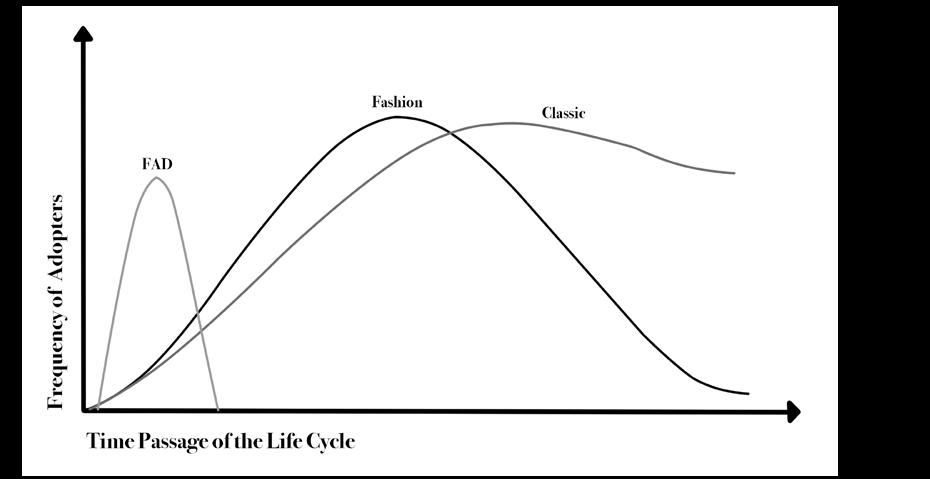
2 minute read
Theories
from Timeless Tweed
by Becky Green
Every product, including fashion items, all have their own finite life cycle. Products are introduced, accepted, and then decline after a period of time. The diffusion of a specific fashion trend typically follows a fashion cycle. The fashion cycle includes four main stages: Introduction, Growth, Maturity and Decline (Kim, Fiore and Kim, 2011). It assists fashion retailers when calculating the potential sales and profitability of their upcoming fashion trends.
Fig 4
Advertisement
THE DIFFUSION OF INNOVATION:
Everett M. Rogers founded a similar theory 4 decades ago; ‘The Diffusion of Innovation’. Despite the age of this theory, ‘trend forecasters today still use his ‘types’ and the percentage divisions within them to calculate the size of each group in any overall society or sector they are asked to study.’ (Raymond, 2010). After extensive research, Rogers consequently divided society up into 4 major categories:
Fig 5 INNOVATORS – ‘those individuals who are responsible for the development of an innovation’ (Raymond, 2010). These people roughly make up about 2.5% of any overall group and are the first people who a trend forecaster needs to discover in order to investigate the early stages of a trend.

EARLY ADOPTERS – ‘the close friends of the Innovator’ (Raymond, 2010), making up 13.5 % of an overall group, and together with the Innovators, they are responsible for the ‘tipping point’ of the trend, where ‘a trend becomes so infectious few people can resist it’ (Raymond, 2010). Fashion brands, at this point, need implement different marketing tools and strategies in order to grow the trend. For a brand to remain competitive, they must grasp this trend and transform it into something unique and relevant to their own brand.
EARLY MAJORITY – highly sociable individuals, who are active online and choose to follow, rather than lead, making up an influential 34% of any overall group. ‘Trend forecasters tend to monitor which ideas or trends the Early Majority are concerned with to determine which ones are set to become more popular than others with the late majority’ (Raymond, 2010).
LATE MAJORITY – conservative by nature, who ‘require high levels of reassurance and explanation about how a new idea will work,’(Raymond, 2010) representing a sizeable 34% of an overall group. Then, the Later Majority and The Laggards are the people who join the trend as it burns out.





